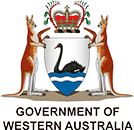Hydrocephalus
A shunt malfunction or infection is life threatening. If you or your child show symptoms of hydrocephalus, call triple zero (000) and ask for an ambulance or go to your nearest emergency department.
Key facts
- Hydrocephalus is caused by a build-up of cerebrospinal fluid (CSF) in your brain.
- Common symptoms of hydrocephalus include headache, nausea, vomiting and seizures.
- Hydrocephalus can affect babies, children and adults.
- It is diagnosed by ultrasound, CT scan or MRI scan.
- Hydrocephalus is usually treated with a VP shunt to relieve pressure in your brain.
What is hydrocephalus?
Hydrocephalus is a condition caused by too much cerebrospinal fluid (CSF) in your brain. Too much fluid creates pressure that can damage your brain.
CSF cushions your brain and spinal cord, provides nutrients and removes toxins (waste). The fluid is normally made and removed in a balanced cycle, but it can build up if:
- your brain makes too much CSF
- it can't drain properly, due to a blockage
- it's not absorbed into the bloodstream
Some children are born with a form of hydrocephalus, known as congenital hydrocephalus.

What are the symptoms of hydrocephalus?
Hydrocephalus causes a range of symptoms depending on the person's age. The most common symptoms of hydrocephalus in all age groups include:
In babies, hydrocephalus may also cause:
- increased head size
- bulging or firm fontanelle (the soft spot on your baby's head)
- poor feeding
- drowsiness
- their eyes to turn inwards
In older children or adults, hydrocephalus may also cause:
- blurred or double vision
- problems concentrating
- coordination issues
- confusion
- incontinence
CHECK YOUR SYMPTOMS — Use the Symptom Checker and find out if you need to seek medical help.
What causes hydrocephalus?
Hydrocephalus can have many causes, ranging from injuries to genetic conditions.
You can develop hydrocephalus after:
- a head injury
- a brain bleed
- a brain tumour
- meningitis (infection)
Another cause of hydrocephalus is spina bifida, a birth defect that affects the spine. Hydrocephalus can develop before or after birth in children with spina bifida.
Children can be born with hydrocephalus because of:
When should I see my doctor?
If you or your child have a shunt and any signs of malfunction or infection, this can be life-threatening. Call triple zero (000) and ask for an ambulance or go to your nearest emergency department.
Call for an ambulance or go to the nearest emergency department if you or your child have hydrocephalus and have (or suspect):
- seizures
- vomiting
- altered level of consciousness or a sudden new neurological problem
- abdominal pain or swelling if you or your child have a shunt
- an infected shunt
- a blocked shunt
- swelling, pain or redness along the shunt tract
FIND A HEALTH SERVICE — The Service Finder can help you find doctors, pharmacies, hospitals and other health services.
How is hydrocephalus diagnosed?
If your doctor suspects that you or your child have hydrocephalus, they can refer you for tests to check for extra fluid around the brain, including:
- ultrasound — if you are pregnant, or for babies whose fontanelle has not yet closed
- CT scan — computerised tomography scan
- MRI scan — magnetic resonance imaging scan
- lumbar puncture — to check cerebrospinal fluid levels
ASK YOUR DOCTOR — Preparing for an appointment? Use the Question Builder for general tips on what to ask your GP or specialist.
How is hydrocephalus treated?
Hydrocephalus is usually treated with a ventricular peritoneal (VP) shunt, placed under your skin. This shunt helps drain excess CSF fluid from your brain into your abdomen to relieve pressure on your brain. A shunt does not cure hydrocephalus, but it can relieve many of the symptoms.
In some children with hydrocephalus, a surgery called a third ventriculostomy is needed. This surgery makes small openings to allow your CSF to flow between the ventricles of your brain.
Not all people with hydrocephalus need surgical treatment.
Living with hydrocephalus
Hydrocephalus is a life-long condition. Its effects on your life vary from person to person and depend on your symptoms and how you respond to treatment. With proper care, most people can live a long and healthy life.
If you have a child with hydrocephalus, they may take more time to learn some skills children or may struggle with poor coordination. Your child may also have learning difficulties as they get older. If your child is showing signs of learning difficulties or slower development, act early. It is important you take them to therapies as soon as possible.
If you or a family member is living with hydrocephalus, you should always be aware and alert to their situation, in case their condition suddenly worsens.
What are the complications of hydrocephalus?
Untreated or inadequately treated hydrocephalus can lead to several complications. Complications include:
- vision issues due to pressure on your optic nerve
- seizures — may require treatment with medicines
- shunt malfunction, blockage or infection
Shunt complications
A shunt malfunction or infection is life threatening. If you or your child show symptoms, call triple zero (000) and ask for an ambulance or go to your nearest emergency department.
A shunt can stop working properly due to: infection, blockage or disconnection. If your shunt isn't working properly, you may develop symptoms such as:
In babies, symptoms may include:
- a swollen head
- vomiting
- being unusually distressed
- being unusually tired or floppy
A shunt can also become infected, leading to:
- fever
- neck stiffness
- redness
- abdominal pain
- leakage from the shunt and tenderness
Can hydrocephalus be prevented?
Currently there is no way to prevent hydrocephalus. Treatment can prevent it from getting worse.
Resources and support
- Brain Foundation website provides more information on hydrocephalus.
- Hydrocephalus Support Association aims to empower people in Australia affected by hydrocephalus through connection, advocacy and education.
- You can also call the healthdirect helpline on 1800 022 222 (known as NURSE-ON-CALL in Victoria). A registered nurse is available 24 hours a day, 7 days a week.
Do you prefer to read in languages other than English?
The Sydney Children's Hospital Network has a factsheet about hydrocephalus translated into Arabic.
Learn more here about the development and quality assurance of healthdirect content.
Last reviewed: September 2024















